I first became familiar with the name “pisco” after imbibing a refreshing, knock-your-socks-off, more-or-less Peruvian national cocktail called a pisco sour. Pisco is an alcohol more akin to moonshine versus a high-quality liquor. Nonetheless, the sweet cocktail soon wormed its way into my pallet. I even toured a historic, yet still functioning, pisco factory and visited its namesake, the city of Pisco. While there, the cocktail and the nearby mysterious Nazca Lines led me to another of my interests, aviation.

The best way to see the Nasca Lines is from the air. Thus, my next stop was the Pisco Airport (Capitán FAP Renán Elías Olivera Airport). The airport is part commercial and part military, and was undergoing construction of a new terminal building at the time of my visit, but flights still went out regularly to the lines. The terminal is now complete and the blue and white tower below has since been updated and painted a desert brown.


We were piled onto a small bus and hauled out to an awaiting Cessna Caravan. Smaller 172s in the foreground of the photo below offered more time on each glyph, but took an hour longer to reach them. We opted for the Grand Caravan (the two aircraft sitting in the background). Pilots have a natural curiosity about aircraft, so I couldn’t help but photograph the tarmac and attached aircraft.
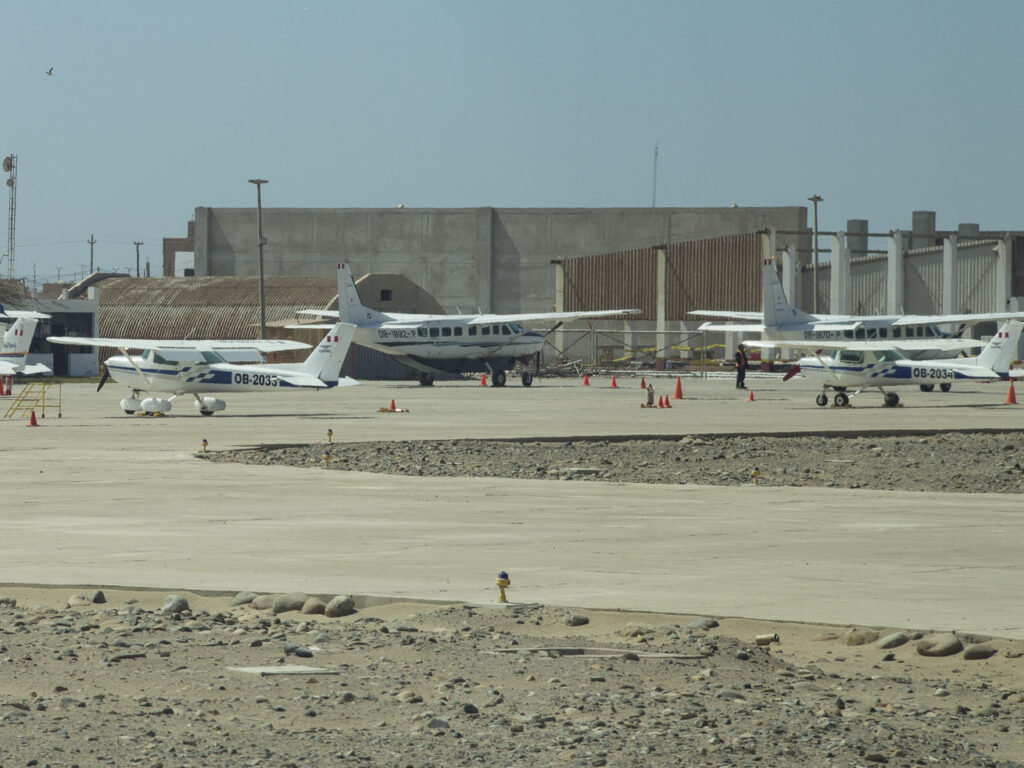
I first noticed the extent to which old aircraft sat around the airport when we prepared to land. Although near the ocean, the climate is dry, dusty, and apparently a bit of a boneyard for old aircraft. The view out the front windshield showed well-spaced parking pads for military aircraft. As we grew closer, it became clear those aircraft were stored, not operational, and from a much earlier era in Peruvian Air Force history.
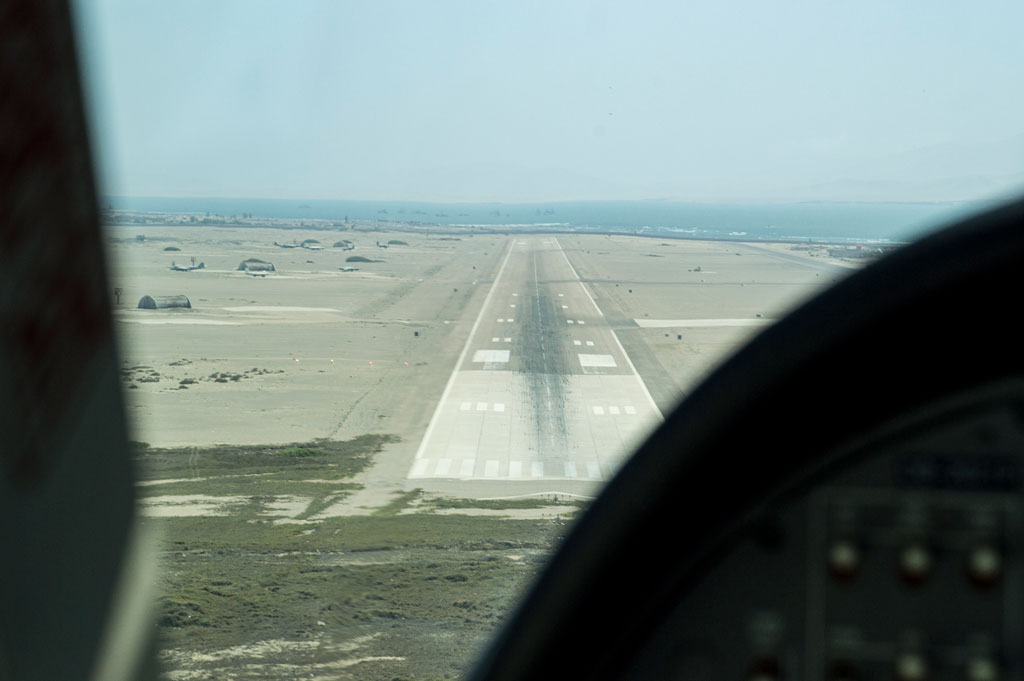

The Peruvian Air Force (FAP), Fuerza Aérea del Perú, ushered in the jet age in the 1950s and chose American and British aircraft like the Canberra bomber to build its flying arsenal. Spare parts became hard to find in 1969 when Peru aligned with the Soviet Bloc, thus the Canberra’s flying days for Peru were limited.
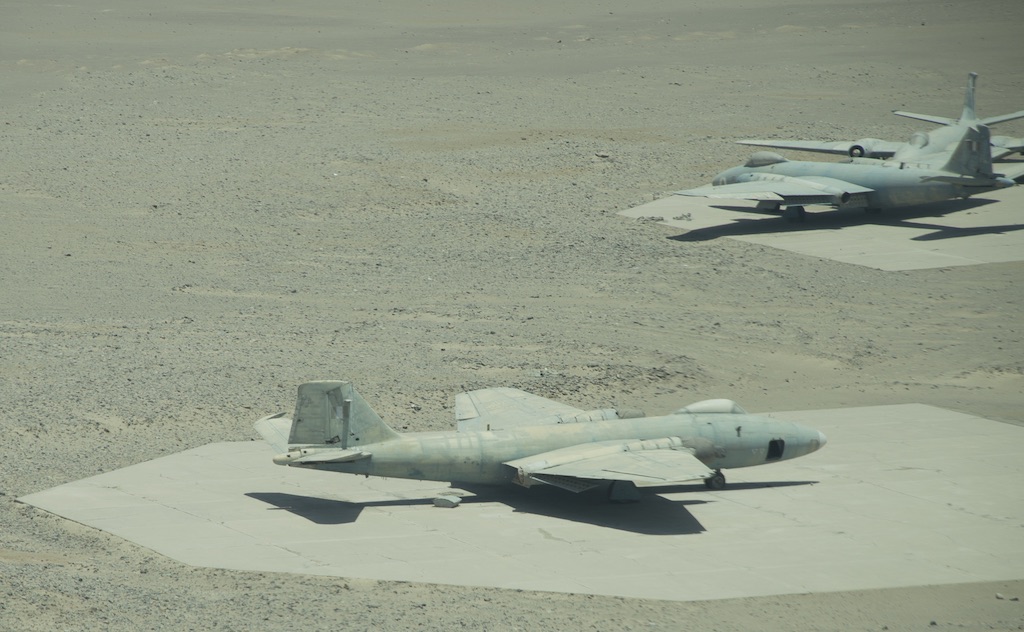
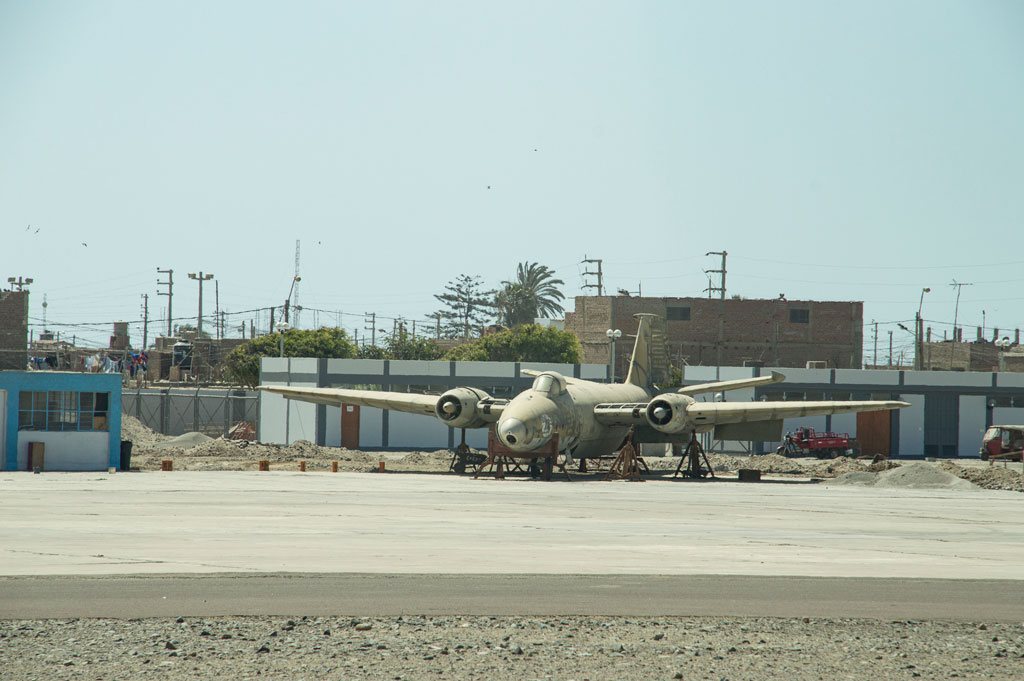
The US also used the English Electric Canberra (B-57) in the Vietnam War, as did the French. I found the photo below in my dad’s Vietnam files. While he photographed many aircraft both in the air and on the ground, he didn’t think this was his as the French (see flag marking on tail at base of vertical stabilizer) were long gone when he got there. As old as these airplanes might seem, NASA still has three Canberra (extended wings and newer engines) that the agency uses for high altitude studies.

These next photos were taken as we bounced along the tarmac, but I was able to catch an array of aircraft used by the FAP (taken in 2013). Pisco is a training base as can be seen from the collection of aircraft parked in front of their squadron. Many of these aircraft have been replaced in recent years by updated trainers.
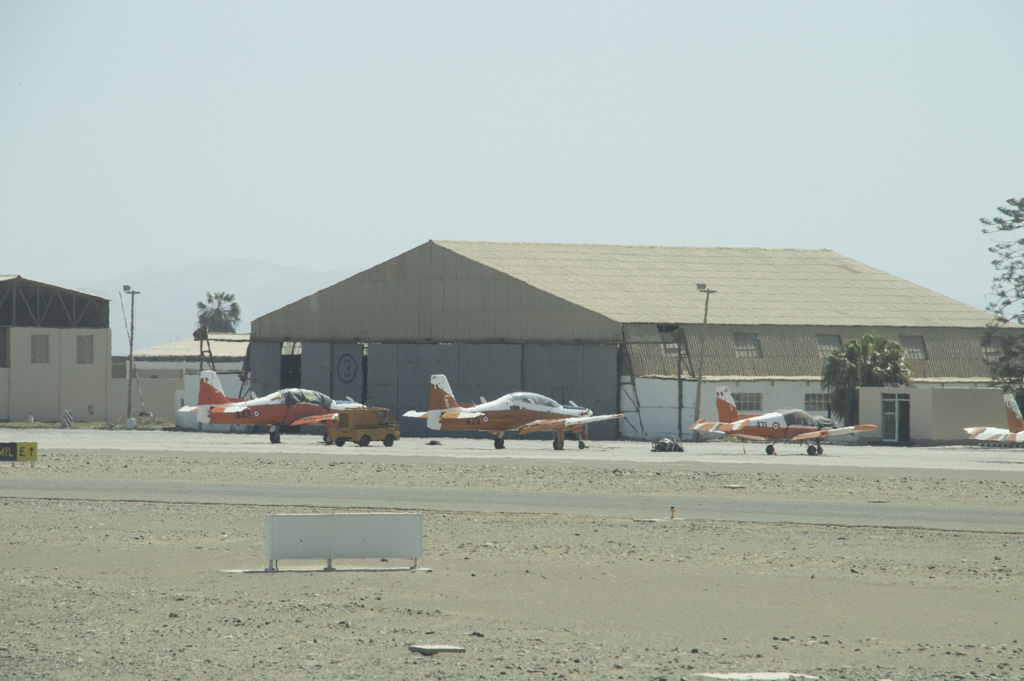
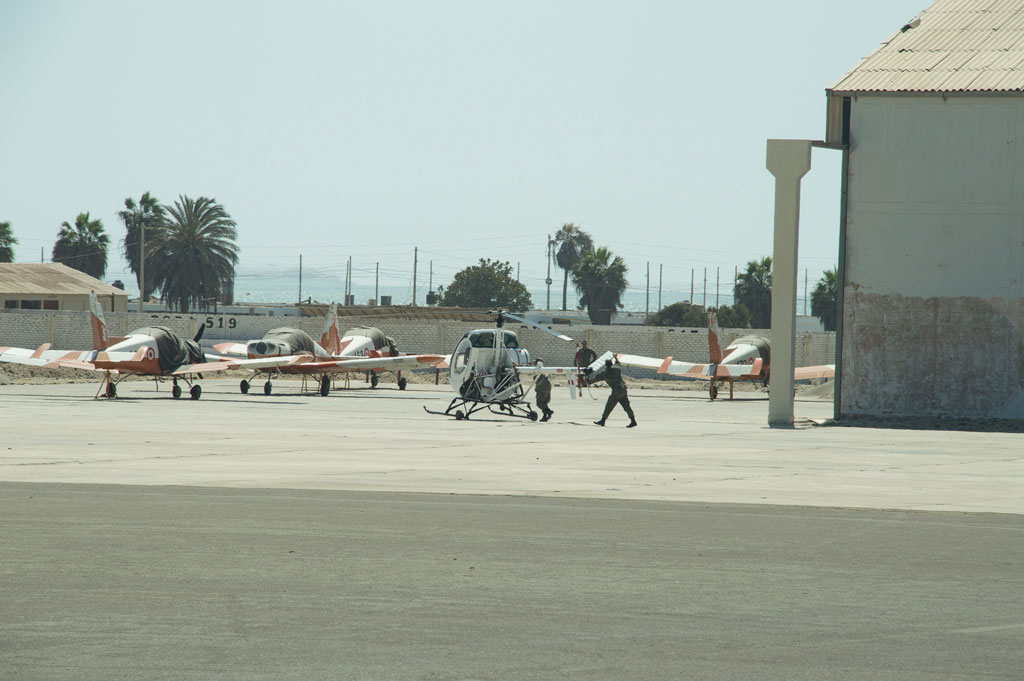
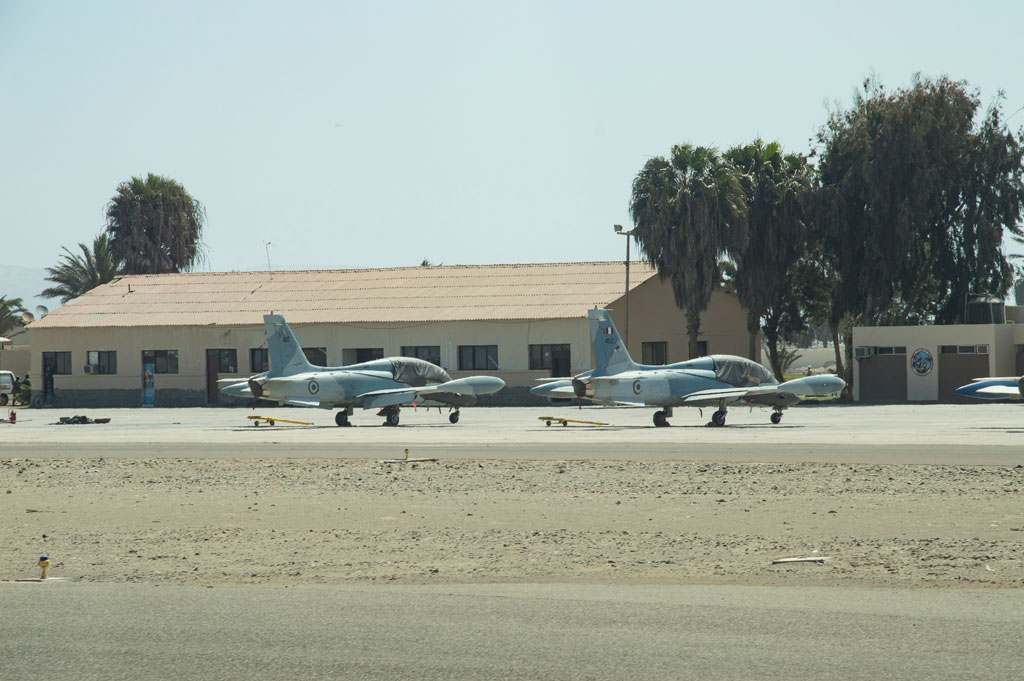
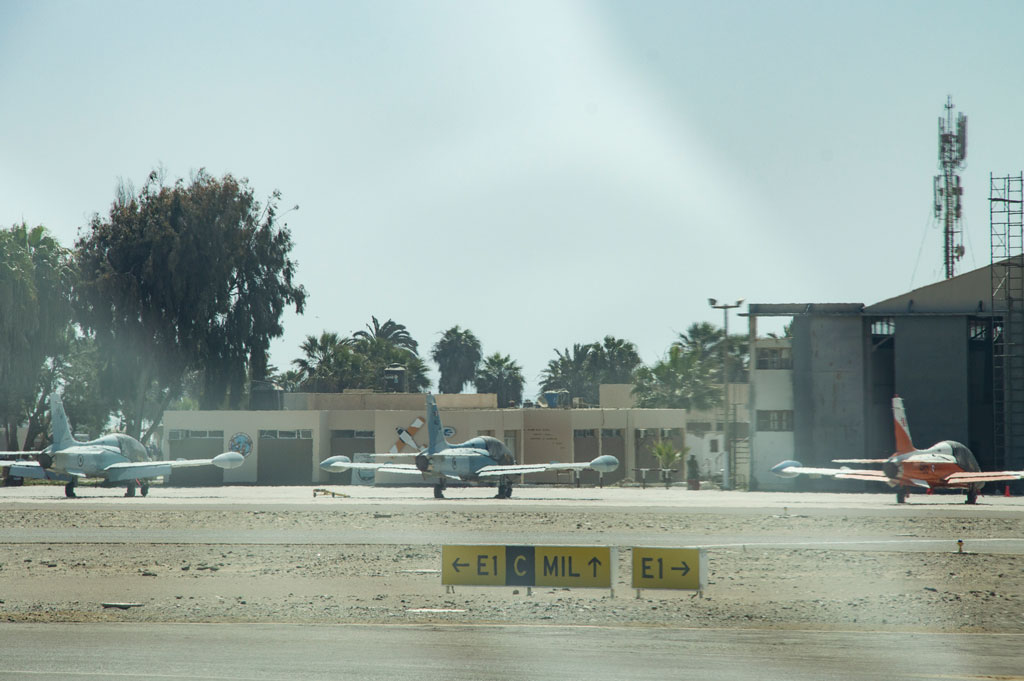
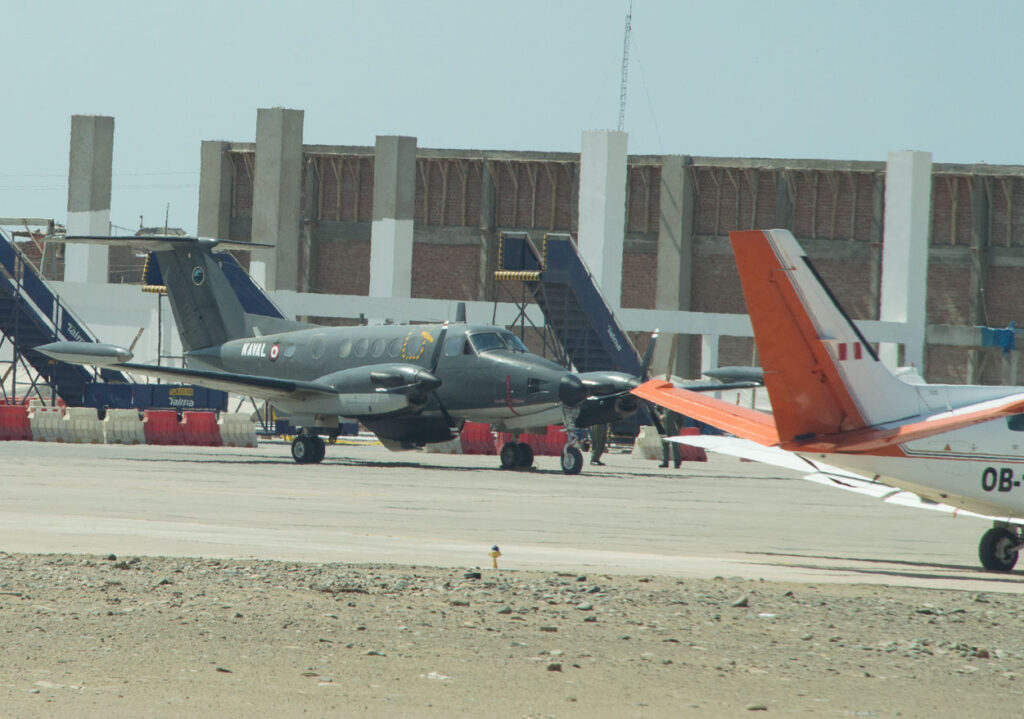
As always, the day passed quickly marveling over ancient history and aviation history. If you enjoyed this brief foray into planes of Peru, follow our blog (in comment section below) and look for more stories of flying and travel, by those who like to take to the air. Now, for that Pisco sour and feet up at a nearby resort.


Leave a Reply